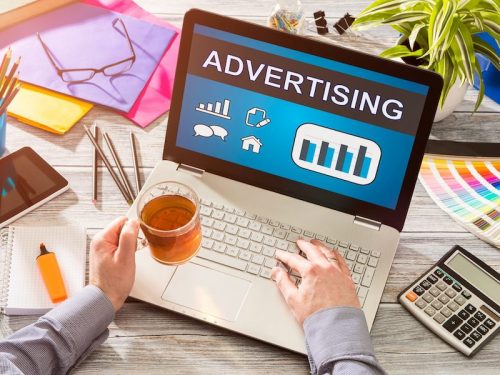
The history of advertising goes back to as early as 2000 BC when the ancient Egyptians made steel carvings for public notices. The history of modern advertising starts with the advent of mediums of mass communication and first one among them was the printing press. Nowadays, advertising is a huge business, thanks to modernity, which has created such huge conglomerates which were never seen before in the history of mankind. The global spending on advertising for the year 2016 was around USD $ 500 Billion, almost twice Pakistan’s total GDP. From that, USD $ 214 billion were spent on TV advertisements and $ USD 160.2 billion were spent on digital advertisements – those being the two largest mediums.
Newspapers were the first major receivers of advertising budgets. After that, the main spend of the brands was consumed by TV primarily because of its wide reach and low cost. But since the advent of digital media, a large piece of the budgets of various brands have shifted towards digital. TV is still the largest medium in terms of ad spend but digital is the medium with the highest growth. The growth in digital media spending for 2016 was 17 % while for TV it was just 4 %.
Print, TV, digital and then what next.
What is the next million dollar technology where the future dollars of advertising will be spent? The answer is programmatic and contextual, in any medium. Basically, programmatic is not a specific medium but it is a specific way of serving ads through real time bidding, with the help of audience insights and efficient customer segmentation and targeting to maximise the impact of each and every ad impression served, be it a static one or a video based impression. Google double click program defines the programmatic as: The use of technology and audience insights to automatically buy and run a campaign in real time, reaching the right user with the right message.
Programmatic uses real time bidding to determine the rate of each impression. It uses sophisticated algorithms which are doing thousands of calculations every moment to decide which ad will be displayed on which web/mobile/search page. Contrary to the traditional media buying method which involves humans, and has fixed costs, programmatic uses real time bidding to determine the rate of each impression. Humans buying inventory in bulk has an inherent problem in its very core: that it creates inefficiencies in media buying and distribution. For example, if I have bought minutes on TV, they will be displayed after a certain time period on each channel. You do not know how many competitors were competing for that particular time period. Similarly, with every minute when the ad is displayed, you are charged the same amount for each hour or a couple of hours regardless of how many people are actually watching your ad on that particular moment. What you know is just the GRPs – that’s it. Programmatic removes those inefficiencies by adopting a real time auctioning and ad inventory distribution approach.
Auctioning and the valuation of the rate per click
Those who have studied basic economics know that economists love auctioning because it eliminates inefficiencies and creates an efficient distribution of resources. The same concept applies to real time auctioning as well. The rate for the click is determined by how many people or brands are bidding for a particular page, keyword or a certain category at a certain date or time and who is willing to give the highest bid at that moment. So, in those categories where there is little competition, the rate automatically falls down and it increases in high competition categories. The programmatic media buying is also beneficial for the consumer because he or she only sees those ads which are most relevant and engaging for them. It is also beneficial for the publisher as those publishers who are producing more compelling and interesting content will get higher rated ad inventory.
The second benefit of programmatic is the combination of creative with audience insights by the use of data. Thanks to the power of data and your online footprints in the form of cookies, which you leave when you are browsing the internet, the digital medium can target a brand’s target audience very precisely. You can target your audience according to their geography, demographics, interests, and even income level in some advanced markets. It makes your ad more relevant and contextual to the people who are viewing your ad (e.g. a prêt kurti ad shown only to females between the ages of 20 – 40). The more targeted your message towards your target audience, the more efficient it will be and you will have a higher return on advertising spend. Marketing is basically about the 3 R’s; delivering the right message at the right time to the right audience. The digital medium and the programmatic give brands the power to do exactly the same; to deliver their creative message to a highly targeted audience at the right time, at their micro moments or their moment of truth, when they are making a purchase decision.
The third benefit of programmatic is real time data sights. You are having almost real time data insights about your target audience and their engagement with your ad creative. What segment of your audience is engaging more with what kind of creative format e.g. static, video or dynamic; what are the demographics, income level, location of the engaged audience. Powered with these insights you can tailor your message according to the audience who have a greater engagement level or you can test two versions of the same ad with a different text, layout of color scheme to see which works better with your target audience. The next phase of programmatic technology, powered by machine learning and artificial intelligence, will automatically optimise the ads based on a brand’s target audience response e.g. if an ad is doing well with people of a certain demographic in a certain geography with certain interests, the software will automatically serve more ads to them until it reaches it maximum engagement level.
“Marketing is basically about the 3 R’s; delivering the right message at the right time to the right audience.”
Is the future programmatic media?
In a survey conducted by Google’s double click platform from the Marketers and digital media buying agencies about which factor is most important/useful for them when buying digital advertising through programmatic technology, 77 % of them mentioned better targeting options as the most important factor. 73 % of them cited reporting/insights as the second most important factor while 72 % of them cited performance/improved ROI as the third most important factor when buying digital advertising through programmatic technology.
Programmatic technology will be the future of advertising in all mediums as they all can be digitally powered now except one and that is print. In Out of home advertising sector, programmatic technology will come into action through digital LED’s where instead of one repeated ad being broadcasted, there will be an array of advertisements dependent on seasonal factors, the time of the day or type of cars in front of the digital bill board. For instance, if it is day time in summers, the ad played could be of a chilling drink. If it is the time for the kids to go home from school, the ads could change to some children energy drink or some ready to eat food, similarly at office closing time the ads could change to telecom company, mobile and bank ads. At places where you can target people personally in out of home domain like in a mall then the latest technologies e.g. machine learning and artificial intelligence will be used to show highly personalised and targeted ads to a brand’s target audience bringing top of the mind awareness or some creative ways will be used to engage the audience.
In the domain of TV, programmatic technology is slowly getting in action as more viewers are transitioning towards watching digital content on their TV’s through You Tube, Netflix and iflix. Advancements in cable technology can also provide content providers with more data which could help new start-ups in transforming the TV advertising experience. A second possibility could be TV’s with a tiny camera to be used with Skype or other video calling applications which could also take your facial data and show you programmatic, relevant and contextual advertising. (Privacy will be a major concern). It is forecasted that by 2020, USD $ 42 billion will be spent globally for buying digital media through programmatic technology while the current spending is estimated at around USD $ 19 Billion. According to Magna, a world leader in media buying, programmatic technologies and platforms remain a key driver in growth of digital media buying activity and innovation in 2016.
In any case and in any domain, the world of advertising is marching towards programmatic and contextual advertising, and will continue to march as that is what the brands need; delivering the right message to the right audience at the right time.
___
by TAYYAB TARIQ NARULA
source: pt


